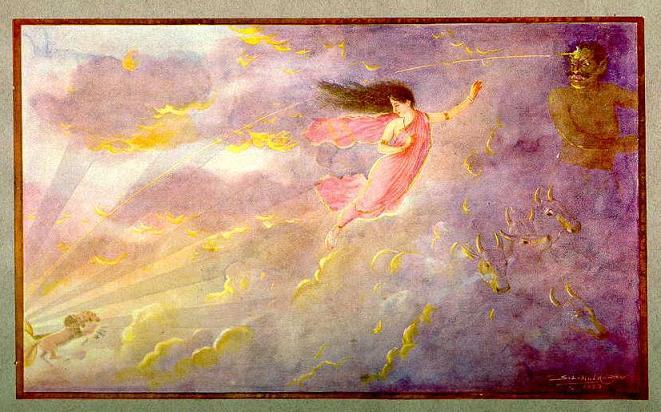srigurubhyO namahA ||
This subsection presents the next ethic / moral precept that leads on from the first one (namely not killing). This is a sensitive subject and might upset the perception and challenge the daily habits of many readers of this blog - thankfully, there are only two verses and there is not much explaining to do on my part! Please be aware that I am not presenting any judgements or moral bias here but simply providing the commentary for the verses as they occur.
*Once again, simple words that require no elaboration.
Except that it is worthy of note that the scriptures mention in great detail
various kinds of Hells – each designed for specific sins, where different types
of sufferings are visited upon those who have ordered into those Hells by the
minions of yamA. The Devi
Bagawatam describes 28 types of Hell with names and ends the description by
mentioning that there are hundreds of thousands of types of Hell. The type of
Hell described here by the sage is similar to what is known as kirimibakshA or the Hell where one is
worm food. The description is of a lake that is of enormous proportions and
which is filled with billions of worms/termite like insects which consume the
person. KumbipAkha (lit. cooked in a pot) is also
mentioned in the texts as being the Hell where one who cooks animals/meat is
sent to where they are made to experience the pain of being boiled alive in a
pot!
thirucchitrambalam |
This subsection presents the next ethic / moral precept that leads on from the first one (namely not killing). This is a sensitive subject and might upset the perception and challenge the daily habits of many readers of this blog - thankfully, there are only two verses and there is not much explaining to do on my part! Please be aware that I am not presenting any judgements or moral bias here but simply providing the commentary for the verses as they occur.
7.. புலால் மறுத்தல்
பொல்லாப் புலாலை நுகரும் புலையரை
எல்லாரும் காண இயமன்றன் தூதுவர்
செல்லாகப் பற்றித் தீவாய் நரகத்தில்
மல்லாக்கத் தள்ளி மறித்துவைப் பாரே. I.7.1.199
எல்லாரும் காண இயமன்றன் தூதுவர்
செல்லாகப் பற்றித் தீவாய் நரகத்தில்
மல்லாக்கத் தள்ளி மறித்துவைப் பாரே. I.7.1.199
7
MEAT EATING - FORBIDDEN
This is the next sub section and is also composed of
only two verses like the preceding one. Here the sage advices the aspirant to
never eat meat of any kind.
Meat Eaters Will Have to Face Hell's Torments
The ignoble ones who base flesh do eat,
Death's agents bind them fast for all to see;
And push them quick into the fiery jaws of hell,
And fling them down there for ever to be. I.7.1.199
The ignoble ones who base flesh do eat,
Death's agents bind them fast for all to see;
And push them quick into the fiery jaws of hell,
And fling them down there for ever to be. I.7.1.199
Com - The ignoble ones who base
flesh do eat,
those who are so base and lowly that they shamelessly consume flesh (meat) Death's agents bind them fast for all to
see; are bound by the minions of yamA
(Death) in a manner that all can see. And
push them quick into the fiery jaws of hell, They are then taken to (a type
of) Hell where their bodies are first eaten away slowly by thousands of termite
like creatures and then they are subject to the great fires. And fling them down there for ever to be.
Into such a Hell they will be flung in a manner to ensure that they are on
their backs stretched out (while being subject to the tortures mentioned above)
for long periods of time.
thirucchitrambalam |
